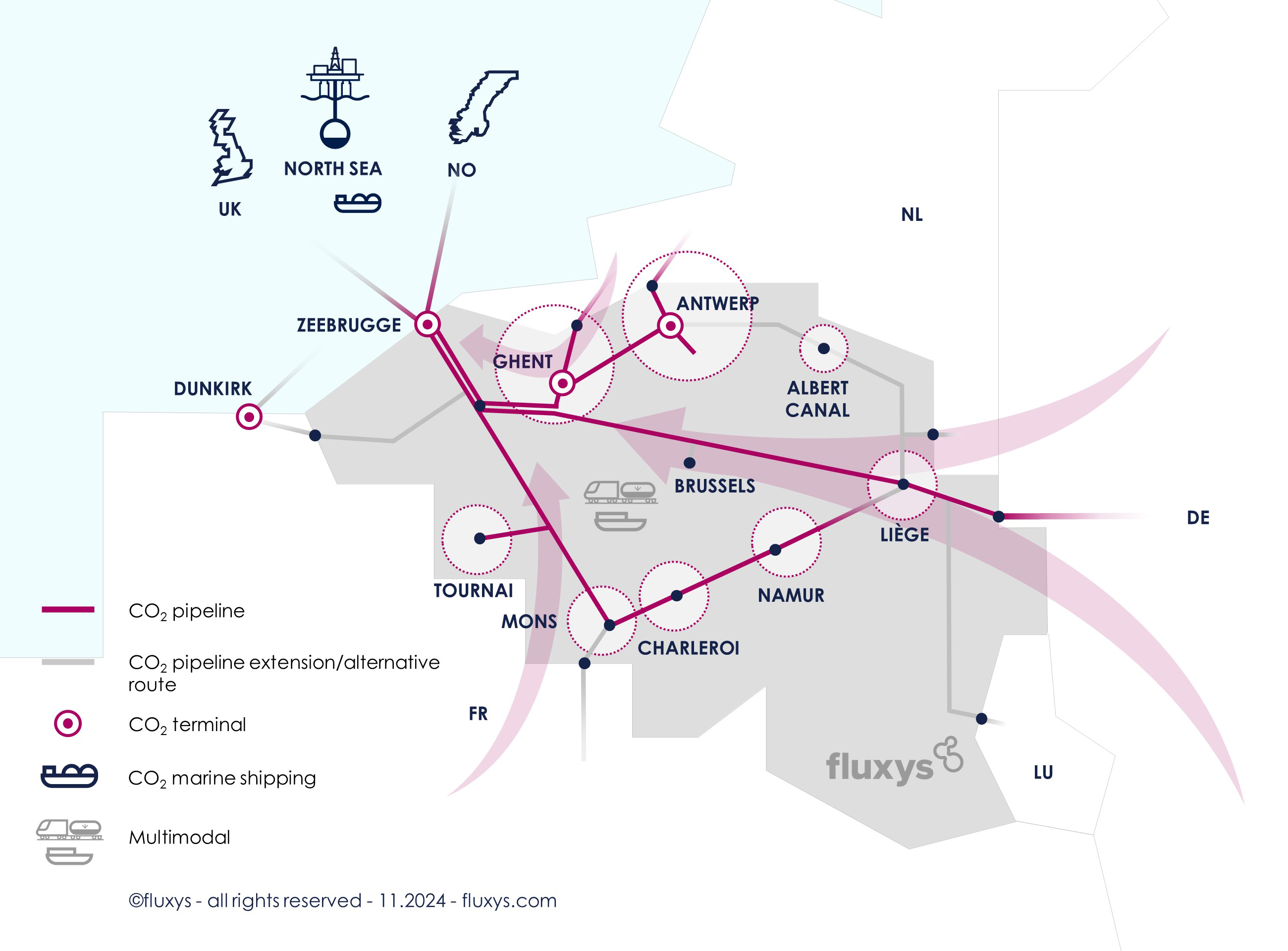Activities
CO₂ infrastructure for industrial decarbonisation
As a key infrastructure partner, we want to accelerate the energy transition with infrastructure for different molecules. We aim to offer customers an annual transport capacity of 30 million tonnes of CO₂ by 2030.
To achieve this, CO₂ networks must be interconnected across industrial clusters and countries through integrated infrastructure, including maritime export terminals and offshore pipeline corridors.
Step-by-step development
Joint development
Since early 2021, we have been preparing the necessary CO₂ infrastructure in cooperation with industry, partners, government authorities, operators and other stakeholders across the regions where we operate and beyond — including key industrial clusters and maritime hubs in North-West Europe — to enable competitive decarbonisation CO₂ export routes. We are doing everything we can to offer our customers the first transmission capacity for CO₂ as soon as the market is ready.
In line with needs
We are developing transmission infrastructure for CO₂ in line with the needs of industry.
Building an interconnected system
We are planning connections between industrial areas, countries and export hubs in order to build the CO₂ networks into integrated systems.
Focus on competitive tariffs
Thanks to the interconnections, we aim to offer high-capacity infrastructure at competitive rates thanks to the scale effect.
Enabling competitive industrial decarbonisation
We are laying the foundation for a large-scale industrial decarbonisation of Northwest Europe while preserving its industrial competitiveness, by linking Northwest Europe’s industrial clusters to storage sites in the North Sea.

Activities in development
CO₂ demand and supply levels in specific clusters need to be matched. Via mutual exchanges between different interested parties (suppliers and offtakers) several promising infrastructure proposals are launched.

